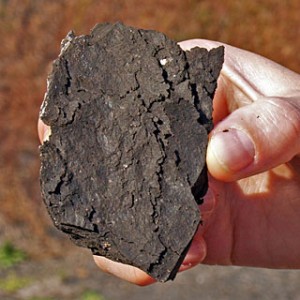In the late 1800s, the main use for petroleum was to produce kerosene for heating lamps. Gasoline, a byproduct of this process, was considered a waste; in Pennsylvania, this "waste product" was dumped into the river, where it sometimes caught fire! At the turn of the century, the appearance of the gasoline-powered engine would usher in the "Oil Age", forever changing the world's relationship with "black gold". Modern societies have grown to depend on this millions-years-old substance to function, guzzling over 30 billion barrels a year. Based on estimations of remaining reservoirs, we can keep this rate up through 2050-2150. Walking through the process of how oil forms underscores just how amazing the substance--a fossil from millions of years prior, surviving only be coincidence--really is.
Formation of Oil
- Oil forms when dead phytoplankton accumulate at the bottom of a lake-bed or s
 eafloor with low-oxygen conditions, which minimizes oxidation and microbial decay.
eafloor with low-oxygen conditions, which minimizes oxidation and microbial decay. - Their carbon-rich bodies mix with clay, which turns into black shale after deep burial.
- As temperatures rise with increasing burial (30-60°C or 1-2 km), the shale will convert into kerogen, a waxy precursor to oil. Kerogen-rich shale is called oil shale, the heating of which can form shale oil.
- Over 90°C (2 km), kerogen breaks down to form oil and natural gas. Above 160°C (5 km), all oil becomes natural gas. Therefore, the range of 90-160°C (or 2-5 km) is known as the oil window, as oil can only form within those conditions.
In the ocean, sediment accumulates (on average) at just fractions of a centimeter every one thousand years. At a sedimentation rate of one centimeter every one thousand years, and assuming that oil will form at 2 km burial, 200 million years would pass to reach the conditions to form oil! This happens to coincide with the age of the Tethys Sea, which did lead to oil deposits. All oil isn't that old, however, as sedimentation rates can be significantly higher, especially during storms and floods.
Preserving Oil

An example of an anticline oil trap. Image credit: Geomore
What happens after oil forms? Oil is more buoyant than water, so the oil rises over groundwater, approaching the surface. Therefore, several conditions must be met for oil to accumulate; otherwise, it just reaches the surface and seeps away, lost to human use.
- First, the source rock containing the oil must be porous and permeable--it must have connected spaces in which the oil can be stored.
- Second, the oil must collect in a trap, a geometric configuration that collects the oil in one space, such as an anticline (a dome; see image). Several types of traps exist--including anticline, fault, salt-dome, and stratigraphic traps.
- Third, the trap must be overlaid by a cap rock, an impermeable rock that prevents the oil from escaping.
- The temperature cannot exceed ~160°C, or the oil will turn into natural gas.
If microbes find their way into the reservoir, they consume the lighter and smaller hydrocarbons, leaving behind only heavy oil (also called bitumen), a thick substance with the consistency of molasses. The heavy oil fills pores in sand or sandstone to form tar sand, which can be processed to collect oil (two tons makes one barrel).
Geologists look for oil using by sending seismic waves into the crust to create seismic-reflection images. Waves are generated using small explosions, a vibrating truck, or pressurized air. If geologists detect a trap and good source rocks, they can drill to check for oil.
You can read more about oil formation here, or learn about its chemistry here.







